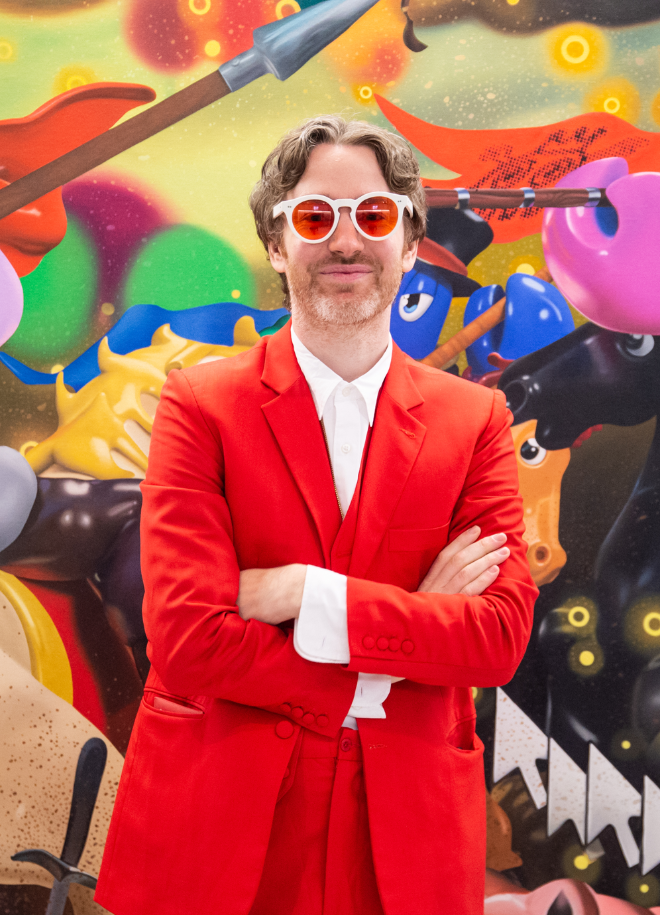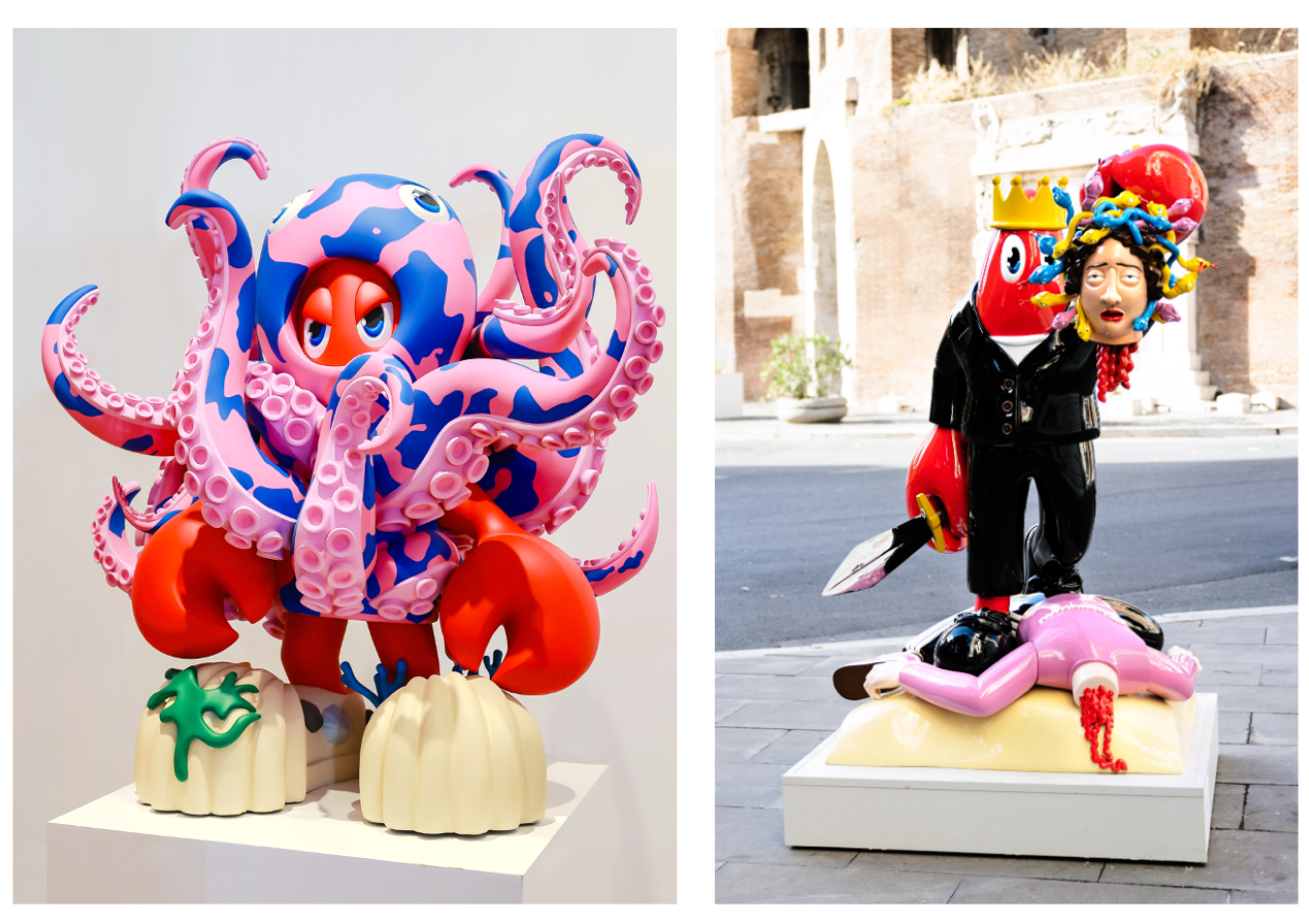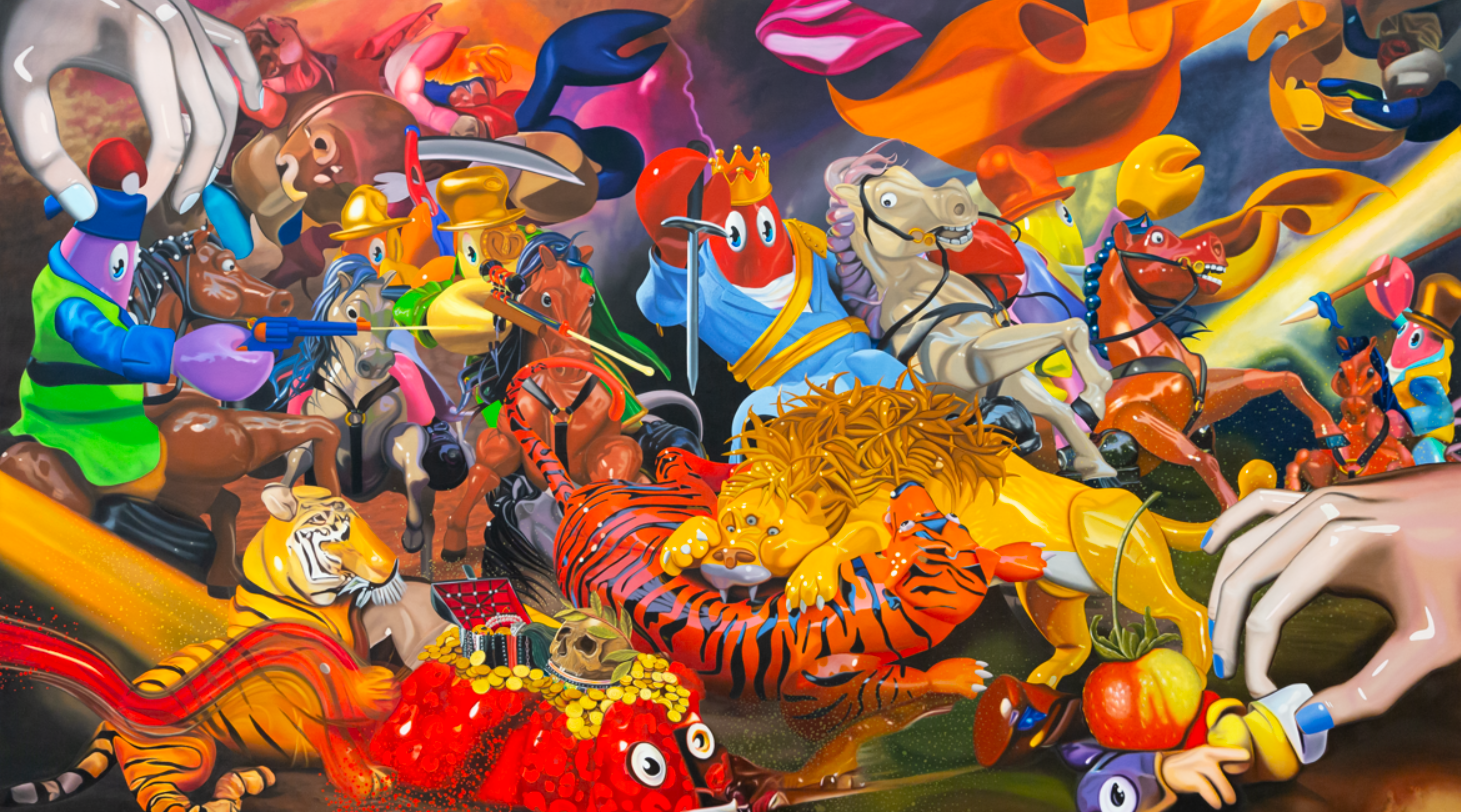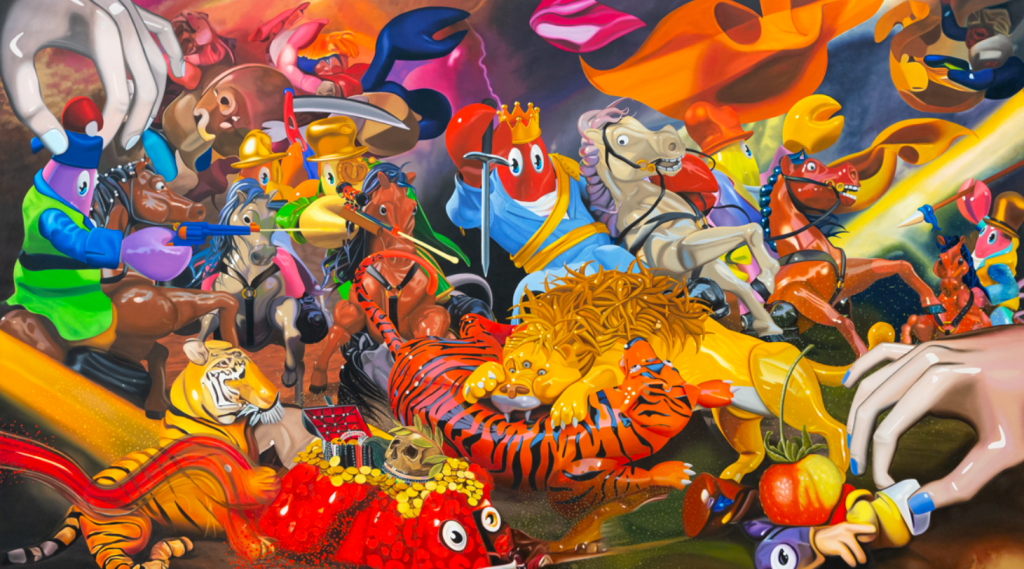Philip Colbert
The Battle for Lobsteropolis
The Lobster Man Returns!
Pop artist Philip Colbert takes on artificial intelligence
with a new battle scene series at Saatchi Gallery.

International pop artist Philip Colbert will return once again to the Saatchi Gallery, the museum where he first introduced his paintings to the art scene. The Battle for Lobsteropolis will run from 29 November – 13 January, will feature six large scale hunt paintings and sculptures.
Famed for his hyperpop-style history paintings, Colbert continues his iconic series of battle scenes. In this major solo exhibition, Colbert’s lobster embarks on a journey through time, confronting artificial intelligence in reimagined historical battle scenes. At the heart of the show are two monumental AI-assisted paintings, with Colbert’s lobster taking on the tech world in epic face-offs.
While AI experts caution that we are unknowingly heading toward a dangerous future, Colbert’s perspective takes a more subtle approach to the impact of AI, creating a world where art history and digital innovation are in constant flux. Instead of sounding an alarm, Colbert engages with the conversation around AI and art, highlighting how our definition of art has evolved.

As AI-generated art challenges traditional norms in the art world, Colbert’s works explore the ongoing tension between history and technological progress. He underscores this monumental theme by revisiting a 2,000-year-old masterpiece from Pompeii. In his new piece, After Battle of Issus Mosaic, he has reimagined the iconic “Alexander the Great” mosaic, which is currently housed at the Museo Archeologico Nazionale di Napoli, where Colbert also showcased his work earlier this year.
The artist reimagines the composition, relocating it to his dystopian Lobsteropolis—a realm that evokes both nostalgia and unease. The clash between Colbert’s lobster and a rising army of AI avatars challenges viewers to reconsider the enduring influence of art history as it confronts the digital age directly.
The exhibition also features a series of sculptures that powerfully convey the intensity of the battle scene, inspired by classical mythological figures such as the Centaur, Minotaur, and Medusa. Colbert’s unique reinterpretations of these iconic characters emphasize the timeless relevance of mythology and its lasting impact in the contemporary world.
The Battle for Lobsteropolis will run from 29 November – 13 January at Saatchi Gallery

An overview of Philip Colbert’s whirlwind year
Referred to as “the godson of Andy Warhol” by Andre Leon Talley, Colbert’s work captivates with a bold mix of pop culture references tied to geopolitics and current events. His visual style is hyper-pop, with the lobster—central to Colbert’s themes and stories—confronting the dangers and complexities of the modern world amidst the barrage of mass and social media.
Colbert has been sketching lobsters as symbols of surrealism for as long as he can remember. Even before he began his artistic career, he crafted a suit adorned with the pattern of his now-iconic crustacean. From that moment on, people began referring to him as the Lobster Man. Driven by his love for pop art and surrealism, Colbert fully embraced this artistic identity, saying, “I became an artist when I became a lobster.”
The Battle for Lobsteropolis at Saatchi Gallery will mark the end of a year filled with continuous, attention-grabbing events. The year began with a collaboration with Vogue for Colbert’s debut solo exhibition in Singapore at the Whitestone Gallery in January.

In March, Colbert’s next venture was House of the Lobster, an event at the Museo Archeologico Nazionale di Napoli, home to the world’s largest collection of Roman artefacts.
In April, Colbert continued his partnership with AS ROMA to raise funds for The Red Cross. Following his design of a special football strip, which was worn by the team and unveiling a giant lobster inflatable in the centre of the stadium at Stadio Olympico, he struck a collaboration with three of the team’s star players. Between them, Leonardo Spinazzola, Paulo Dybala, Leandro Paredes and Stephan El Shaarawy and Colbert created a one-of-a-kind painting that entwined the essence of art and football.
In the summer months, Colbert was invited to takeover of London’s most iconic design emporiums, The Conran Shop. Teaming up with his wife, visual artist and filmmaker Charlotte Colbert, they completely transformed the store into an immersive installation of their world, featuring furniture and exclusive homewares that reflect their distinct surreal vision. Their home, Maison Colbert, described by US Vogue as a “theatrical funhouse,” was shared with the public to make surrealism accessible to any home.
In September, Colbert traveled to Seoul to reveal his largest inflatable artwork yet: the Giant Lobster King, a massive 16-meter sculpture set afloat in the middle of Lake Seokchon on a huge rubber ring. In celebration of Lotte Mall’s 10th anniversary, Colbert’s sculptures brightened both the mall’s interior and its exterior lawn, attracting some of K-pop’s biggest stars, like Dishoon and Yoshi from Treasures, along with Jennie Kim. At the same time, Colbert’s solo show at the Next Museum transformed the Seoul district into a whimsical lobster wonderland.
Following an exhilarating year of worldwide tours with his iconic lobster, Philip Colbert and Saatchi Gallery now invite you to immerse yourself in ‘Lobster Land,’ a realm where the past and future converge to celebrate art’s enduring spirit amidst today’s technological evolution.



